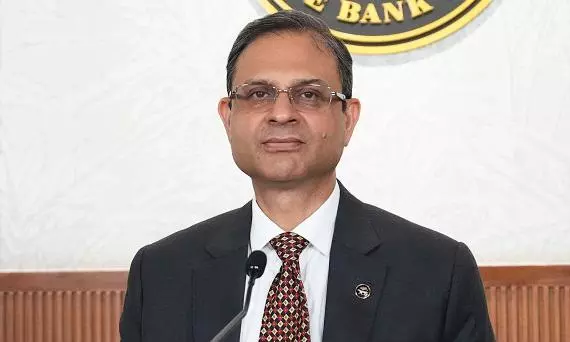
RBI retains growth at 6.5 pc, but signs of demand slowdown evident
No takers for bank loans and falling foreign investments point to weakening demand; the US tariff adds to risks to growth

The Reserve Bank of India (RBI) has kept the headline interest rate (repo) unchanged at 5.5 per cent and monetary stance ‘neutral’ after the two-day deliberations of its monetary policy committee (MPC) meeting given headline inflation (CPI) falling to a 77-month low of 2.1 per cent in June, driven by a healthy monsoon, and resilient rural consumption, reviving urban consumption and congenial financial conditions.
The central bank kept the growth projection for FY26 at 6.5 per cent, despite global headwinds, stating that the risks to growth were “evenly balanced”. But beneath such optimism, there are telltale signs of weakening demand and rising risks to growth.
Liquidity trap
A major factor for not reducing the repo rate and maintaining a ‘neutral’ stance is hidden in RBI Governor Sanjay Malhotra’s statement: Net liquidity surplus has grown to an average of Rs 3 lakh crore per day in the past two months, rising from an average surplus of Rs 1.6 lakh crore a day during the previous two months. This means the RBI keeps infusing liquidity, but there are no takers. Scheduled commercial banks (SCBs) are parking more and more money with the RBI, causing a surplus in the banking system.
Also read: RBI's Monetary Policy Committee keeps repo rate unchanged at 5.5 pc
This is as clear a sign as any that the demand is weak and the need for investment has diminished.
No takers for bank loans
The RBI governor sought to downplay the slowdown in bank credit growth by stating that the borrowing by large corporations from non-bank sources, like commercial paper and corporate bonds, has reduced the reliance on bank credit. That may be so for large corporations, but that doesn’t explain the overall downward trends in credit outflows. For example, credit growth to the non-food sector fell to 11 per cent in FY25, half of 20.2 per cent in FY24.
It has further fallen to 1.2 per cent during June 2025 over March 2025 (FY26). During this period (March-June 2025), growth in credit outflows to industry is negative (-0.1 per cent) – with that to medium industry falling to -0.8 per cent and to large industry to -3 per cent, only micro industry saw an uptick at 10.2 per cent.
Growth in credit outflows to services is -0.6 per cent. Credit growth is seen only in the personal loan segment (for consumption) at 3.3 per cent, but that is largely because of distress mortgaging of gold – which saw a sharp rise of 32.7 per cent (up from 20.7 per cent in the corresponding previous year). Even housing loans, which account for the bulk of personal loans, have fallen to 1.9 per cent, from 2.9 per cent in the corresponding previous fiscal.
Also read: Unclaimed deposits over Rs 67,000 crore in banks as of June 30, says Finance Ministry
Falling foreign investments
Another indicator of weakening demand is on the external front. Both long-term foreign direct investments (FDI) have fallen for several years, and short-term or hot money (FPI and FII) has begun to pull out in recent months. The RBI governor downplayed the first, which is of greater significance, by saying that it had “moderated” during April-May 2025 (FY26), without giving the data.
The RBI’s May 2025 bulletin showed, net FDI inflow fell by 96.8 per cent in FY25 to $353 million, from FY24 – the sharpest fall since FY05. This is a continuing trend that began in FY21 when it was $43 billion. This fall (though gross FDI inflow increased) was attributed to higher repatriations and outward investment, pointing to better investment destinations than India. The FPI pullout of $0.8 billion during April-July 2025 also reinforces the weakening of market sentiments.
Silence on US tariff hike, impact on export
The RBI governor didn’t dwell much on the risks that US President Donald Trump’s 25 per cent tariff and threats of further penalty to Indian exports and growth would cause, although he alluded to it, and admitted to the risks posed by prolonged geopolitical tensions, persisting global uncertainties, and volatility in global financial markets to growth. Taking both internal and external factors into consideration, the governor said the risks to growth were “evenly balanced”, persisting with his projection of growth at 6.5 per cent in FY25.
Also read: Indian economy stable amid geopolitical tensions, tariff policy uncertainties: RBI Bulletin
But what it hides is the quiet acceptance that the export engine of growth no longer matters for growth. This is particularly unfortunate since exports have played a key role in the growth of developed and developing nations. It played a big role for India after the 1991 trade liberalisation. Export growth zoomed to 11 per cent during 1992-2019, from 4.5 per cent during 1952-1991, pushing the GDP growth to 6.5 per cent during 1992-2019, from 3.5 per cent during 1952-1991.

